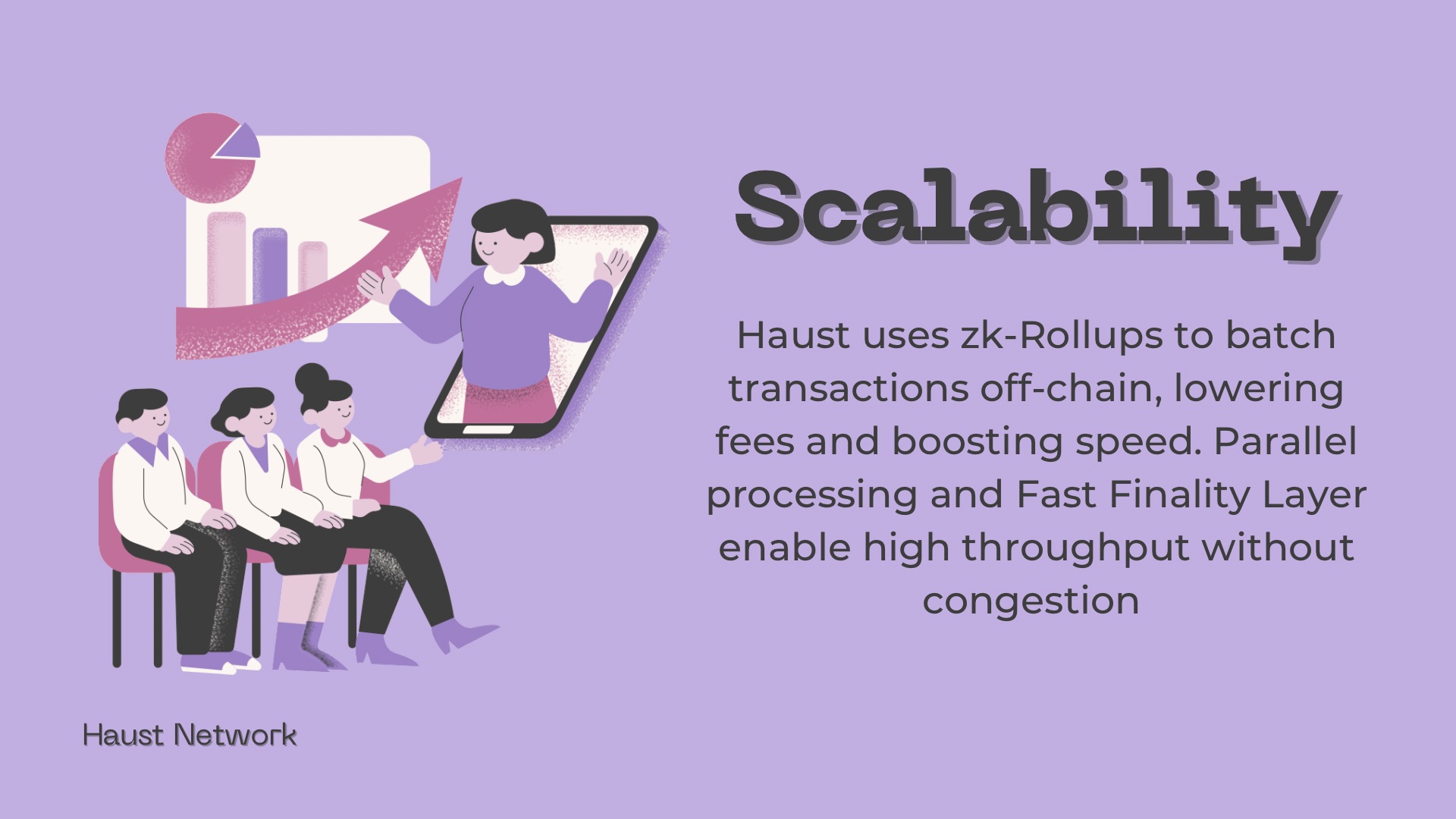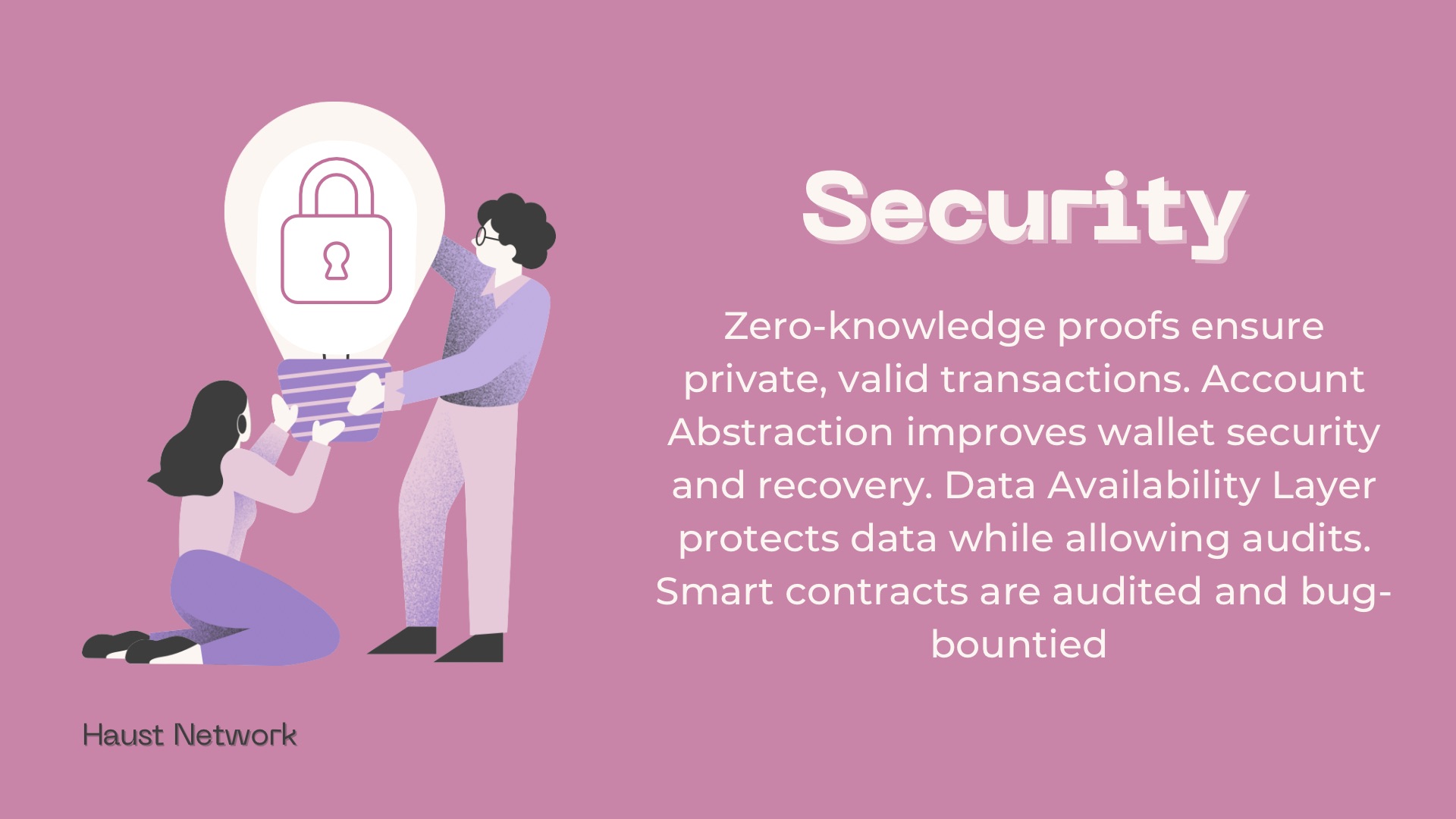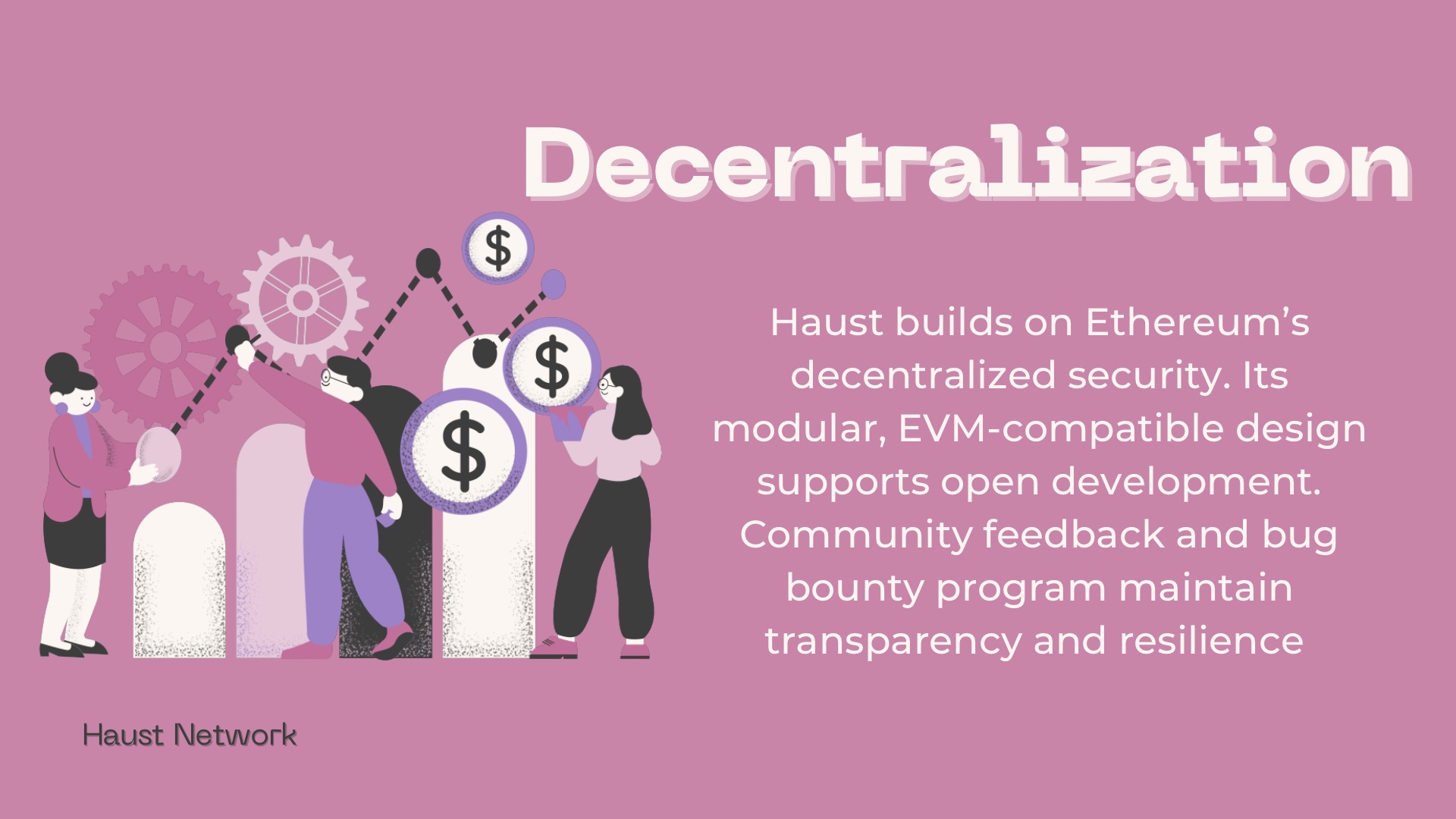The blockchain space has long faced a difficult trade-off: building a network that is secure, scalable, and decentralized - all at once. Most projects only manage to excel at two, leaving the third behind. Haust Network is tackling this challenge head-on with an infrastructure that delivers strength in all three dimensions. How? By strategically integrating advanced cryptography, smart design choices, and modular components into every layer of its architecture.
Let’s break down how Haust addresses each pillar of the blockchain trilemma and how it pulls them together into a unified, high-performance ecosystem.
Scalability

Haust is built for throughput. Instead of treating scalability as a bolt-on feature, it's embedded directly into the core of the network using cutting-edge Layer 2 technologies.
-
zk-Rollups form the backbone of the scaling mechanism. They allow Haust to bundle hundreds of transactions off-chain and post a single, verified proof to Ethereum. This not only cuts down on costs but also greatly reduces pressure on the base layer.
-
Transaction Merging ensures that multiple transactions can be compressed and verified efficiently. By minimizing the number of operations sent to Ethereum, Haust keeps fees low while maintaining high throughput.
-
Parallel Transaction Execution increases performance even further. Rather than processing operations sequentially, Haust runs them in parallel - significantly increasing the number of transactions the network can handle simultaneously.
-
Technologies like Near Data Availability and Nuffle Fast Finality give Haust the infrastructure needed to confirm transactions faster and avoid the slowdowns common in congested networks. They solve for latency while maintaining data consistency and integrity.
Why it matters: Haust provides scalability, enabling a high-speed environment that’s ready for real-world applications.
Security

Security at Haust is baked into the protocol from every angle. From cryptographic enforcement to contract-level scrutiny, the network is designed to be resilient.
-
With Zero-Knowledge Proofs, every bundle of transactions posted to Ethereum is mathematically proven to be correct. This eliminates the risk of fraud or manipulation, while also preserving privacy - since no individual transaction details are made public.
-
Haust implements Account Abstraction to remove the pitfalls of traditional private key systems. Users can access their wallets using familiar, secure methods such as biometric authentication, custom permissions, or password recovery flows. This makes security more accessible without compromising its robustness.
-
Data Availability Layer allows the network to balance transparency and privacy. It ensures that data can always be verified, which is crucial for audits and compliance, while shielding sensitive user information from exposure.
-
Smart contract safety is enforced through a multi-layered process:
-
Haust works with independent security professionals throughout the development process.
-
All smart contracts are subjected to rigorous audits by external firms.
-
A public bug bounty program invites community participation in identifying vulnerabilities, turning potential attackers into contributors.
-
Why it matters: Haust creates a security model that doesn’t rely solely on code or cryptography. It combines cryptographic guarantees with practical safeguards that make using and developing on the network safer for everyone.
Decentralization

Haust’s decentralized nature goes far beyond simply running a few validators. The network architecture ensures true permissionless participation, transparency, and composability.
-
By anchoring on Ethereum, Haust inherits the security and decentralization of one of the most proven and distributed networks in existence. Every zk-proof submitted to Ethereum is validated by its decentralized validator set, ensuring integrity without requiring trust in any individual party.
-
Built using the Polygon CDK, Haust offers a modular framework that lets projects build and launch autonomously. Developers can tailor their apps, rulesets, or even execution layers without being restricted by rigid protocol rules.
-
With full EVM compatibility, Haust supports every existing Ethereum tool - wallets, smart contracts, and development libraries. This enables an open development ecosystem where no migration or code rewrite is necessary.
-
Community governance and participation are embedded through initiatives like the bug bounty program and open infrastructure design. Whether you’re a developer or a user, Haust gives you tools to interact, build, and contribute freely.
Why it matters: Haust redefines decentralization not just as node distribution, but as freedom of choice, contribution, and access. It’s about letting the ecosystem evolve without centralized control or bottlenecks.
Conclusion

The blockchain trilemma has long been seen as an unsolvable puzzle, but Haust Network is proving that the right architecture can break that deadlock. By carefully combining zk-rollups for scalability, modular frameworks for flexibility, and user-focused design for real-world usability, Haust demonstrates that a blockchain can be:
-
Scalable, without becoming bloated, expensive, or slow for users.
-
Secure, without forcing users into overly complex key management or fragile systems.
-
Decentralized, without sacrificing speed, composability, or developer freedom.
Haust is a future-ready ecosystem designed to empower developers to build innovative dApps, give users seamless experiences, and enable institutions to deploy scalable financial products - all without trade-offs. By uniting performance, security, and decentralization under one network, Haust is setting a new standard for what modern blockchain infrastructure should look like.
More information about the project can be found below:
Twitter: https://x.com/HaustNetwork
Discord: https://discord.com/invite/QWGxjTXD8N
Web-site: https://haust.network/
Telegram: https://t.me/haustnetwork
